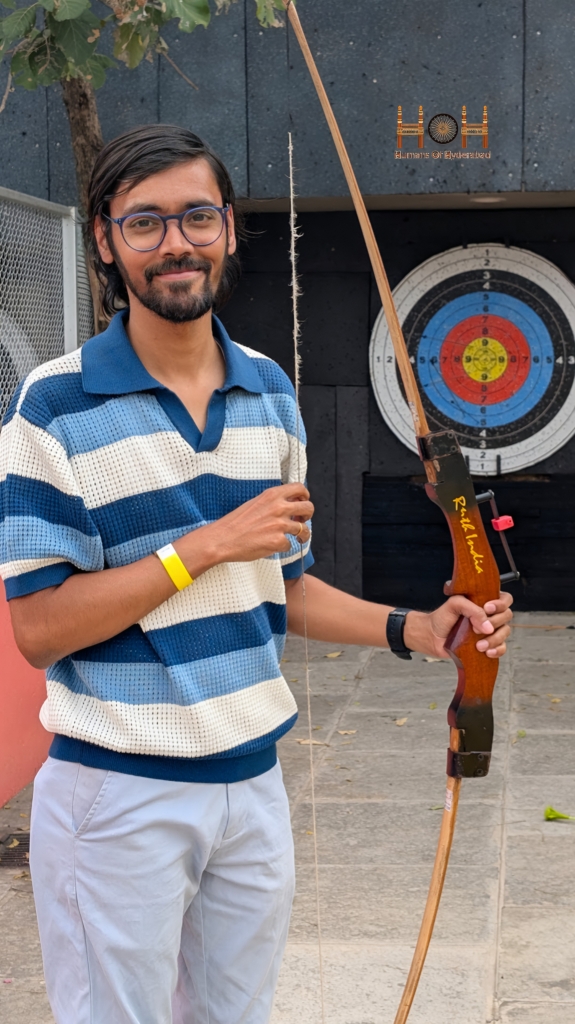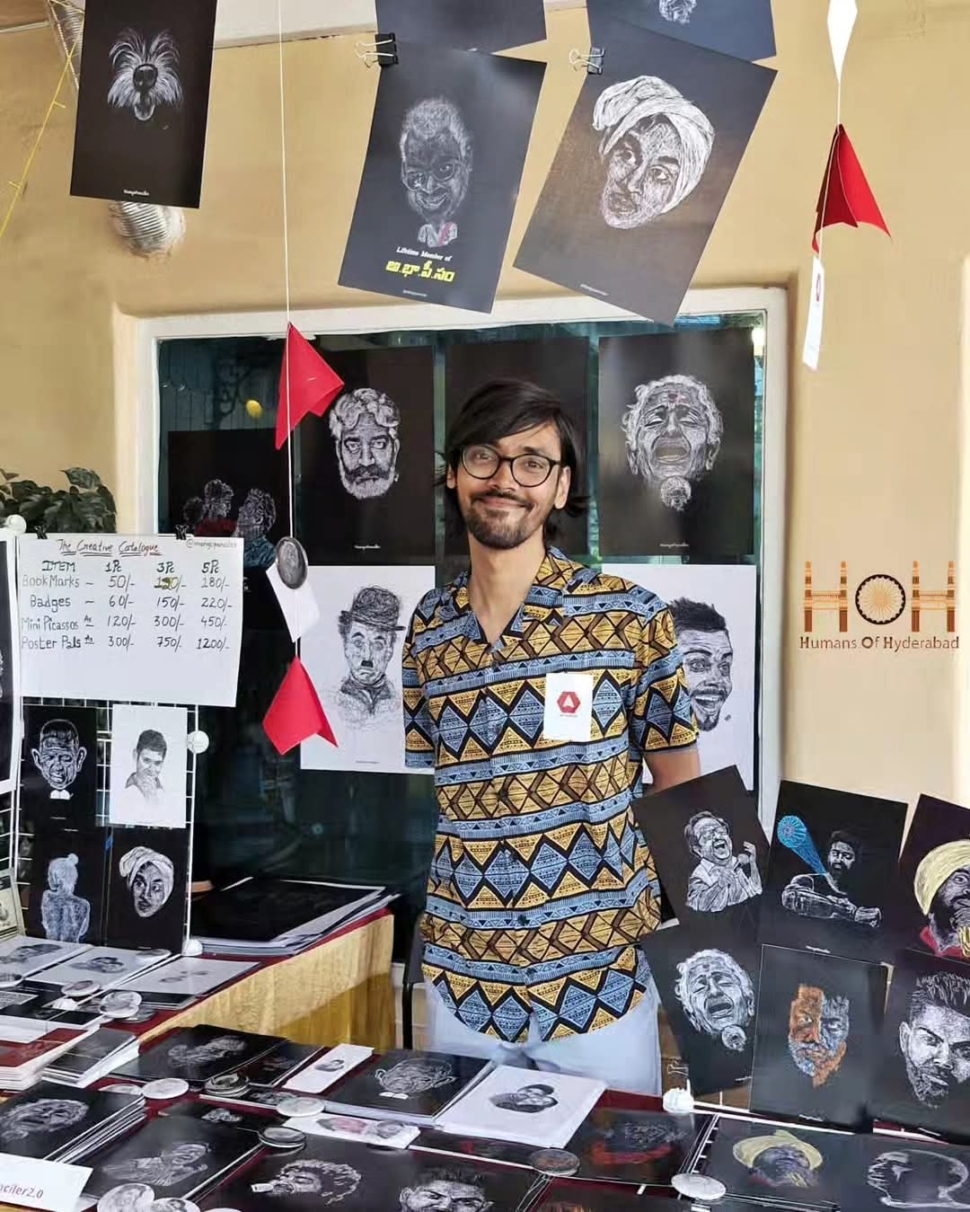“I don’t remember exactly when I started drawing—it’s just something I’ve always done. Back in my school days, I’d spend hours recreating cover pages of devotional magazines, sketching gods and goddesses. I still vividly remember the day I won first prize in a school drawing competition in 8th grade. The theme was AIDS awareness, and the prize was ₹200 in a gift envelope. By the time I got home, the envelope was all that remained. My friends had convinced me to celebrate with a party on the way back!
As kids, we were pretty introverted. My friends and I would stay home and sketch computer wallpapers—mostly superheroes and other ‘cool’ stuff. Even during my engineering days, I carried this habit with me. My college had a board called “Expressions,” where students could display their artwork. Most of the time, that board was filled with my sketches. Seeing my art displayed like that gave me so much joy.

But life happened, and once I started working, I drifted away from art for a long time. It wasn’t until I met some incredible artists here in Hyderabad that I found my way back. Interacting with them reignited something in me, and I realized art wasn’t just a hobby—it was a big part of who I am.
While art has always been a part of my life, my journey into instructional design was purely accidental. I walked into a random job interview without even knowing what the role was about, and somehow, I got selected. Over time, I discovered how meaningful the field could be. Growing up, I often felt like a victim of subpar educational practices. Instructional design gave me a chance to change that—to create learning experiences that are engaging and impactful.
Games played a huge role in shaping my creativity too. I spent most of my childhood indoors, and my curiosity about how games were made eventually led me to pursue a two-year course in game art. That course introduced me to digital art, which I still enjoy today, and it gave me skills that I carry into my instructional design work—like gamifying learning to make it fun and interactive.
My family has always been supportive, though I’ve kept my art life pretty private. They’d proudly tell others about my drawing skills, but I rarely bring them to my art events. I think it’s partly because I want to stay grounded and not let it get to my head, and partly because I’ve always been an introvert.
One of the things I love most about art is how freeing it can be. I’ve always been drawn to portrait-making—faces and emotions, in particular. Early on, I used minimal shading and simple outlines, partly because it was enough to capture the essence of a subject, and partly because I didn’t have the patience for perfect shading.

That changed when I discovered the work of Vince Low, a Malaysian scribble artist. His style opened my eyes to a whole new way of creating. Scribble art felt liberating—there’s no such thing as a wrong line. It’s about capturing the bigger picture, layering lines to build emotions and depth without worrying about perfection. Over time, I developed my own approach to scribbling, and it’s become one of my favorite ways to create.
Balancing everything—freelance art, instructional design, and eLearning can be challenging, but I’ve made a conscious effort to prioritize balance in my life. I take on fewer projects so I can enjoy my work, spend time with family, and have space for creative exploration. It’s not about earning more; it’s about living meaningfully.
Movies and song lyrics also play a big role in inspiring me. Songs, especially, have this incredible ability to condense a whole story or emotion into just a few minutes. That simplicity and depth influence both my art and my instructional design. Whether it’s creating a doodle inspired by a song or designing a course that simplifies a complex topic, storytelling is at the heart of everything I do.
Looking ahead, I want to create art that sparks conversations about societal issues and topics that matter. I believe art can make people pause, reflect, and see the world differently. In instructional design, I’m excited to explore more storytelling-driven approaches—using gamification and creativity to make learning engaging and impactful.”
